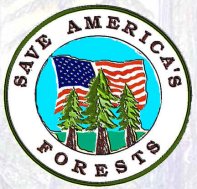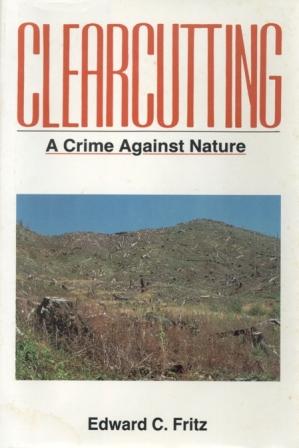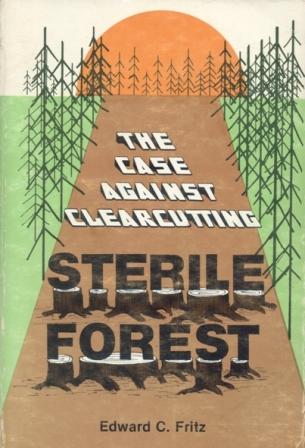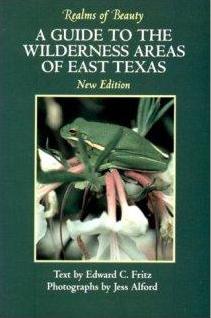Ned Fritz's Forest Bill:
The Clearcutting Restraint Act (H.R. 2406)
Ned, who devoted much of his life to fighting clearcutting, was the original author of The Clearcutting Restraint Act (H.R. 2406), sponsored by Congressman John Bryant, the bill that later evolved into The Act to Save America’s Forests.
From the Library of Congress Website:
HR 2406 IH
101st CONGRESS
1st Session
H. R. 2406
To amend the Forest and Rangeland Renewable Resources Planning Act of 1974 to strengthen the restraints upon clearcutting and certain other cutting practices in the National Forests of the United States.
IN THE HOUSE OF REPRESENTATIVES
May 18, 1989
Mr. BRYANT (for himself, MR. MINETA, Mr. QUILLEN, Mr. BENNETT, Mr. DONNELLY, and Mrs. PATTERSON) introduced the following bill; which was referred to the Committee on Agriculture
A BILL
To amend the Forest and Rangeland Renewable Resources Planning Act of 1974 to strengthen the restraints upon clearcutting and certain other cutting practices in the National Forests of the United States.
Be it enacted by the Senate and House of Representatives of the United States of America in Congress assembled,
SECTION 1. SHORT TITLE.
This Act may be cited as the `Clearcutting Restraint Act of 1989'.
SEC. 2. PURPOSE.
The purpose of this Act is to protect the national forests in the United States from excessive clearcutting and certain other intensive cutting methods, and from the soil erosion, nutrient losses, diversity reduction, recreation impairment, wildlife, hunting and fishing disadvantages, and other harms which result from such cutting practices.
SEC. 3. AMENDMENT OF FOREST AND RANGELAND RENEWABLE RESOURCES PLANNING ACT OF 1974.
(a) IN GENERAL- Section 6 of the Forest and Rangeland Renewable Resources Planning Act (16 U.S.C. 1604) is amended--
(1) by amending subsection (g)(3)(B) to read as follows:
`(B) in each stand throughout each forest, preserve substantially the relative abundance and dominance of species, ecological communities, and intraspecies genetic diversity that would inhabit that stand in the absence of human impact, permitting ecological succession to proceed as it would occur without the influence of human beings, with the only exceptions being during the extraction stage of authorized mineral development, during authorized construction projects, and during harvesting of timber under a resource management plan that complies with all other sections of this Act and prescribes a harvesting practice that temporarily upsets the balance of nature;'; and
(2) by adding at the end the following:
`(n) LIMITATION ON USE OF CERTAIN CUTTING METHODS-
`(1) In the case of any national forest in the United States where one-tenth of the acreage of available commercial timberland has been cut by one of the methods listed in this subsection, or any combination of such methods, the guidelines under subsection (g)(3)(F) shall prohibit any future use of any of the following cutting methods in such national forest--
`(A) clearcutting,
`(B) seed tree cutting,
`(C) shelterwood cutting,
`(D) group selection cutting of more than one-tenth acre per group, and
`(E) group selection cutting of more than one acre per four acres of any one stand.
`(2) For the purposes of this subsection--
`(A) the term `available commercial timberland' means land that is being managed for timber production on a regular basis;
`(B) the term `group selection cutting' means the removal of trees in small groups with a result of maintaining different age groups in a given stand; and
`(C) the term `stand' means a plant community with enough identity by location, topography, or dominant species to be considered as a unit, not to exceed 100 acres.
`(3) Any person, State, or Federal agency may, in a civil action, obtain appropriate relief to enforce this subsection. In an action under this subsection, the court may award the prevailing plaintiff a reasonable attorney's fees and costs of litigation. No notice shall be required to bring an action under this subsection.'.
(b) CONFORMING AMENDMENT- Section 6(g)(2)(F) of the Forest and Rangeland Renewable Resources Planning Act (16 U.S.C. 1604(g)(2)(F)) is amended by inserting `in accordance with subsection (n) and' after `National Forest System lands'.
SEC. 4. EFFECTIVE DATE.
The amendments made by this Act shall not apply with respect to any contract to harvest timber which was awarded on or before the date of enactment of this Act.
END
Back to Ned Fritz Page
|





